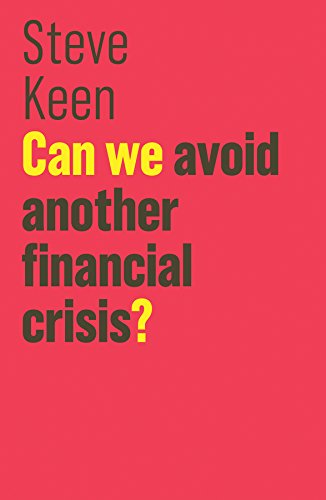 |
| Amazon link |
Peter Turchin recommends this book in his latest, rather blood-curdling post. He writes,
"It is strange to actually live in a society experiencing a structural-demographic crisis, after studying many examples of such crises in the past. Unfortunately the crisis is developing largely according to the classical pattern. The degree of political polarization is at its highest levels since the (First) American Civil War. Intra-elite infighting is tearing the Republic apart. ...Turchin also sees the world economy in the 'winter' phase of the current Kondratiev cycle (I recently wrote about these here).
"Steve is one of the “heterodox economists” (meaning that they are pretty much ignored by the mainstream). His starting point is the theory of Hyman Minsky (another economist who was largely ignored by the profession). Minsky’s theory makes a lot of sense to me, however. Let me try explain it in one paragraph.
"The main dynamical driver is the magnitude of private debt (combining what’s owed by both corporations and households) in relation to GDP. Currently this indicator is at 150% of the US GDP. Why is it bad?
"Actually, for a while, as private debt grows, things are just fine because expanding credit drives economic growth (think of new housing construction during building booms). But eventually the cost of servicing accumulated debt starts to depress consumption (the more you pay for your mortgage, the less money you have to buy things). Falling consumption results in overproduction of goods and declining profits for businesses, which makes investment a losing proposition. Credit collapses, businesses go bankrupt, or downsize their labor, less employment means even less consumption, and (absent large-scale increase in government spending) the economy enters a downward-trending “death spiral” of a prolonged depression.
"The precise timing of the turn-around point is very difficult to predict (it’s another example of earthquake-like dynamics). Yet Steve Keen is one of very few economists who predicted the General Financial Crisis (GFC) of 2007–2008.
"If Steve is right in identifying the main cause of the GFC, then we should listen to what he says in the book about the likelihood of another crisis in the next few years. Unfortunately, the news is bad, because we are still at a very high level of private debt in relation to GDP."
In any event, I acquired the book and will read it along with this:
They say the first four chapters are tedious, and that after that, things pick up (most readers have abandoned by then). In these early chapters Marx writes at length and repetitiously about the nature of the commodity, use-value and exchange-value, money and the transformation of money into capital.
He's a lively writer, always good for a venomous quip at the expense of an opponent; his knockabout style is far from politically-correct. It helps to be aware of just how important - how foundational - these concepts are for the whole development of Marxist economics.
Still, I'm glad I've got beyond chapter four.


No comments:
Post a Comment
Comments are moderated. Keep it polite and no gratuitous links to your business website - we're not a billboard here.